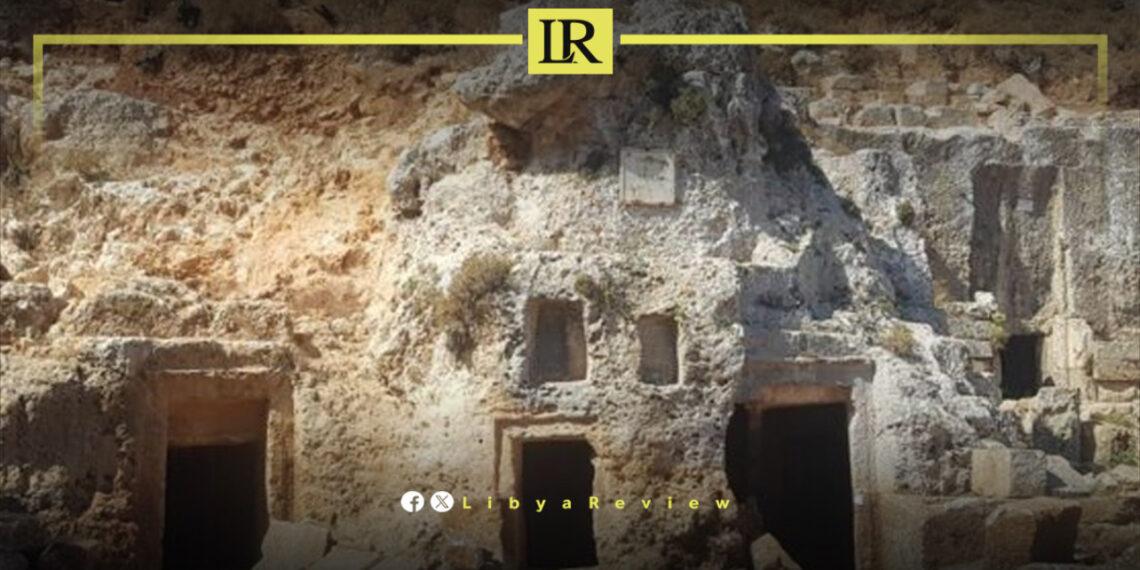On Wednesday, an Italian archaeological team announced the discovery of an exceptional ancient tomb in the historic city of Cyrene in eastern Libya.
The discovery, made in Shahat, adds remarkable depth to our understanding of funerary traditions in North Africa during the 5th and 4th centuries BC.
The site lies within one of Libya’s most culturally rich locations, designated as a UNESCO World Heritage Site.
Led by archaeologists Olivia Menozzi, Oscar Mei, and Serenella Ensoli, the team has excavated five tombs so far. However, the latest find is by far the most significant. The tomb features rock-cut burial chambers with refined architectural façades and intricate carvings, including niches for offerings and sarcophagi sculpted directly into the stone.
Inside the chambers, the researchers discovered the remains of multiple individuals, including three adults and several children.
The presence of finely crafted pottery from both local and Attic traditions, small vials of scented oil, and ritual offerings indicates that these were elite family burials. Gold-decorated crowns made of clay beads and bronze fittings were also found, signaling high social status.
One tomb held six individuals, likely a family unit. Another contained three, believed to be a smaller family group. Archaeologists believe the tomb complex was used for at least three generations. A genetic analysis is underway to determine the familial relationships of those buried.
This effort includes collaboration with researchers from Sapienza University and Harvard Medical School, as part of a broader genetic mapping project for the region.
One of the most striking aspects of the site is the religious symbolism. Marble statues of funerary deities were recovered, especially depictions of Persephone and Demeter—figures strongly associated with the afterlife in ancient Greek religion. The marble used in these statues likely came from Greek islands such as Paros or Naxos, suggesting strong cultural and trade ties between Cyrene and the Greek world.


